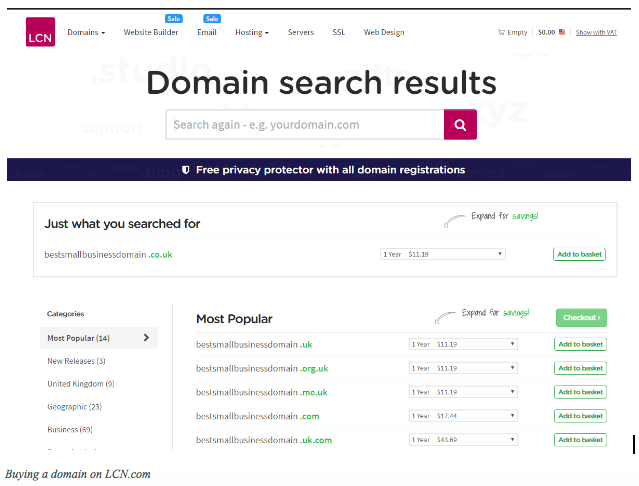For years exact-match domain names had it good in Google’s search result pages. If you owned one then you were almost guaranteed to rank well for your chosen search phrase and, accordingly, the market for them was fierce and expensive to enter.
When we talk about “exact-match” we mean that, for example, you own the domain bluewidgets.com and your target money phrase is “blue widgets”. You would naturally expect this to be a highly-targeted domain that matches the searcher’s needs, and it seems that Google felt the same way. So much in fact, that for years they have given artificial influence to exact-match domains (or EMDs) in their search results.
This in itself was never really a problem. Not until, of course, websites with less than stellar intentions began to pop up and abuse this extra boost that came with their newly-acquired domain name.
It didn’t stop with EMDs either; if you had a partial-match domain (or PMD ), such as blue-widgets.com or bluewidgetstore.com, you also got a piece of the pie – not quite as strong a boost, but a boost nonetheless. And here is where the problem started.
Thin affiliate sites would pop up around any search term with decent commercial yield and Google’s mission to deliver searchers to the one true answer were being severely impacted. And so, on September 27 2012 Google, with the help of their web spam Tsar Matt Cutts’ team, unleashed an algorithm update aptly named the ‘Exact-Match Domain Update’, or just EMD Update for short.
The purpose of this update was to remove that bias that was afforded to the EMD and PMD domains of the past and instead rank domains purely on their own merit on a level playing field. ‘Great!’ we thought – but as with all updates, there are always casualties from friendly fire. From dissecting over a million rows of pre and post-EMD Update data, it’s hard not to feel that rather than just remove some prior boost for EMD and PMDs that, actually, Google has gone on the offensive and started to use keyword-focused domains as a negative signal, instead of not as one at all.
UK online marketing agency High Position – the wranglers of this data – has carried out some detailed research to gauge the true impact of Google’s actions. They track the movements of over 100,000 keywords every single day, so they’re well placed to answer the question.
The results are quite startling. On average, EMDs ranked at position 13.4 prior to the update. After, you ask?, position 26.6! But this is taking into account everything that ranked within the top 100 results.
Ben Milleare, technical director at High Position says, ‘A better idea of the true impact can be found by looking at just those domains that ranked competitively before the update – on page 1.’ This is even more worrying. Pre-EMD Update the average rank was 3.2, and afterwards it was down to 11.9. For partial-match domains, the news was equally as bad with page one drops from a 5.2 average down to 12.1. ‘This is the difference between being seen and not being seen. It’s night and day,’ adds Tom Jepson, head of search.
The advice and takeaways are simple: focus on your brand and not on a generic domain name. You need to make your marketing tactics algorithm-proof. If you already own and use an EMD/PMD, and you saw ranking drops around September 27, then you should contact a professional agency or consultant that can guide you on the best next steps.




